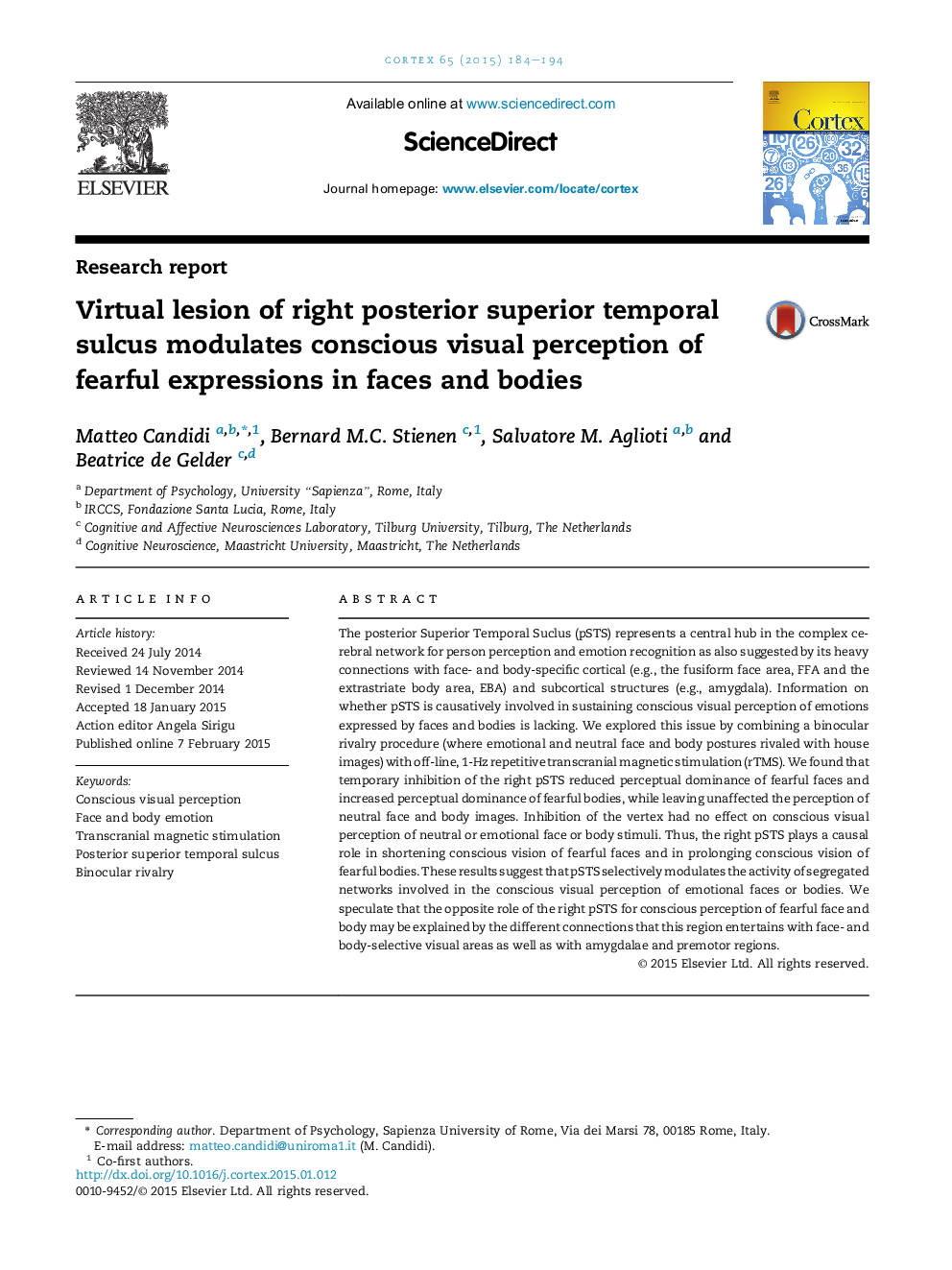| کد مقاله | کد نشریه | سال انتشار | مقاله انگلیسی | نسخه تمام متن |
|---|---|---|---|---|
| 7314669 | 1475467 | 2015 | 11 صفحه PDF | دانلود رایگان |
عنوان انگلیسی مقاله ISI
Virtual lesion of right posterior superior temporal sulcus modulates conscious visual perception of fearful expressions in faces and bodies
ترجمه فارسی عنوان
ضایعه مجازی سولوس قاعدگی راست پایین خلفی، ادراک بصری آگاهانه از بیانات ترسناک در چهره و بدن
دانلود مقاله + سفارش ترجمه
دانلود مقاله ISI انگلیسی
رایگان برای ایرانیان
کلمات کلیدی
درک بصری آگاهانه، احساسات صورت و بدن، تحریک مغناطیسی ترانس مغناطیسی، سوزن طولانی پشتی پشتی، رقابت دوقلو،
موضوعات مرتبط
علوم زیستی و بیوفناوری
علم عصب شناسی
علوم اعصاب رفتاری
چکیده انگلیسی
The posterior Superior Temporal Suclus (pSTS) represents a central hub in the complex cerebral network for person perception and emotion recognition as also suggested by its heavy connections with face- and body-specific cortical (e.g., the fusiform face area, FFA and the extrastriate body area, EBA) and subcortical structures (e.g., amygdala). Information on whether pSTS is causatively involved in sustaining conscious visual perception of emotions expressed by faces and bodies is lacking. We explored this issue by combining a binocular rivalry procedure (where emotional and neutral face and body postures rivaled with house images) with off-line, 1-Hz repetitive transcranial magnetic stimulation (rTMS). We found that temporary inhibition of the right pSTS reduced perceptual dominance of fearful faces and increased perceptual dominance of fearful bodies, while leaving unaffected the perception of neutral face and body images. Inhibition of the vertex had no effect on conscious visual perception of neutral or emotional face or body stimuli. Thus, the right pSTS plays a causal role in shortening conscious vision of fearful faces and in prolonging conscious vision of fearful bodies. These results suggest that pSTS selectively modulates the activity of segregated networks involved in the conscious visual perception of emotional faces or bodies. We speculate that the opposite role of the right pSTS for conscious perception of fearful face and body may be explained by the different connections that this region entertains with face- and body-selective visual areas as well as with amygdalae and premotor regions.
ناشر
Database: Elsevier - ScienceDirect (ساینس دایرکت)
Journal: Cortex - Volume 65, April 2015, Pages 184-194
Journal: Cortex - Volume 65, April 2015, Pages 184-194
نویسندگان
Matteo Candidi, Bernard M.C. Stienen, Salvatore M. Aglioti, Beatrice de Gelder,
